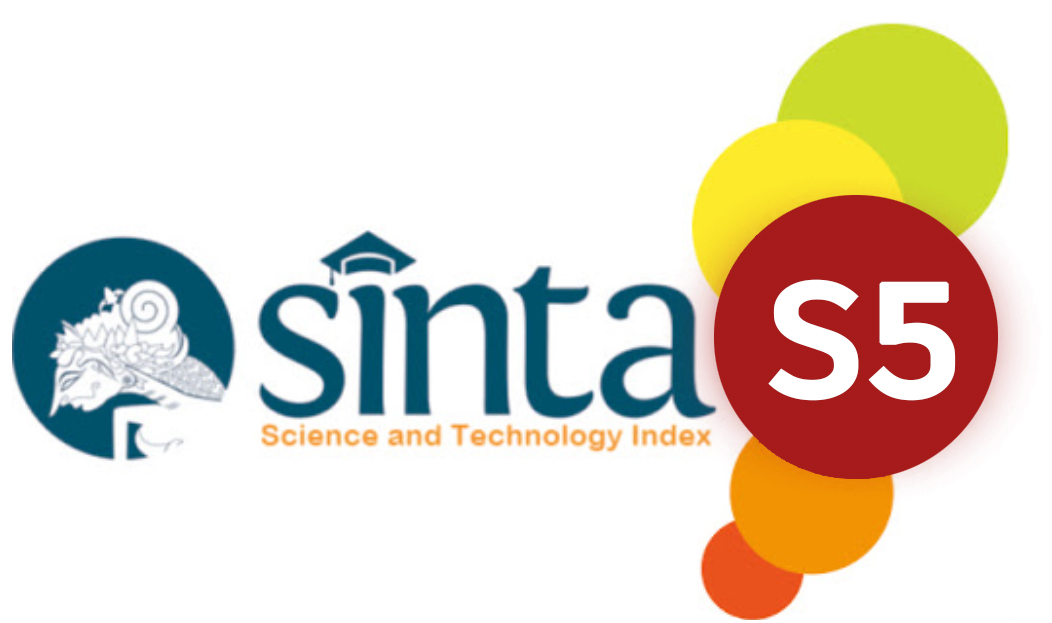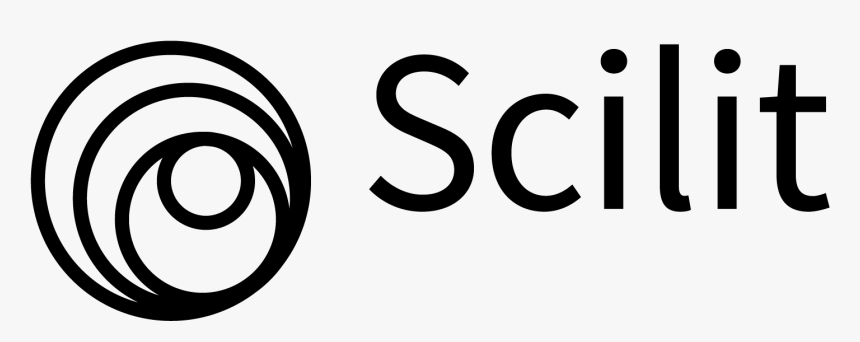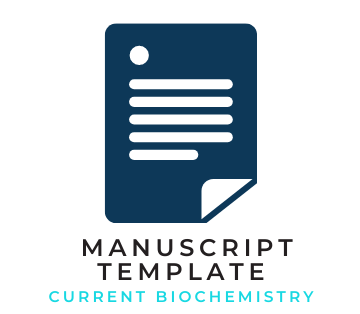Isolation and Identification of Endophytic Bacteria from <i>Ficus variegata</i> Blume as Antibacterial Compounds Producer
Abstract
Endophytic bacteria can produce antibacterial compounds. Their existence in the medicinal plant of Ficus variegata Blume enables the production of bioactive compounds similar to those contained by the host plants. The purpose of this study was to isolate and identify endophytic bacteria from F. variegata which is potential to produce antibacterial compounds. The methods used include isolation of endophytic bacteria from leaves, stem, aerial root, and fruit of F. variegata plants. Antibacterial activity assay was done against four types of bacteria i.e. Staphylococcus aureus, Bacillus subtillis, Escherichia coli, and Psedomonas aeruginosa. Identification of endophytic bacteria was conducted based on morphological analysis, biochemical test, and molecular analysis of 16S rRNA. Endophytic bacterial culture was extracted by ethyl acetate and analyzed by GC-MS. A total of 29 isolates of endophytic bacteria were obtained from F. variegata. The BH2 isolate was found to have potential activity. Analysis of 16S rRNA showed that BH2 isolate was related to Pseudomonas aeruginosa strain SV1 with 99 % identity. The result of GC-MS analysis showed that the antibacterial compound was Nonanoic acid ethyl ester
References
Akpuaka A, Ekwenchi EK, Dashak DA, Dildar A. 2013. Biological activities of characterized isolate of n-hexane extract of Azadirachta Indica A.Juss (Neem) leaves. New York Science Journal. 6(6): 119-124.
Baker S, Satish S. 2013. Bioprospecting of endophytic bacterial plethora from medicinal plant. Plant Sciences Feed. 3:42-45.
Charyulu EM, Japyesan S, Gnanamani A. 2012. Antioxidant and antimicrobial profile of a secondary metabolite of Pseudomonas aeruginosa: ESR and spectrophotometric methods. Oxidants and Antioxidants in Medical Science. 1(2): 119-126.
Chen S, Liu J, Gong H, Yang D. 2009. Identification and antibacterial activity of secondary metabolites from Taxus endophytic fungus. Sheng Wu Gong Cheng Xue Bao. 25: 368-374.
Cowan SJ. 1974. Manual for the Identification of Medical Bacteria. Cambridge: Cambridge University Press.
[Dephut] Departemen Kehutanan. 2008. Daftar Isian Pelaksanaan Anggaran (DIPA) Tahun Anggaran 2008 Satuan Kerja Pusat Informasi Kehutanan tentang Nyawai (Ficus variegata Blume). Jakarta: Dephut.
Elita A, Saryono S, Cristine J. 2013. Penentuan waktu optimum produksi antimikroba dan uji fitokimia ekstrak kasar fermentasi bakteri endofit Pseudomonas sp. dari tanaman dahlia
(Dahlia variabillis). Journal Indonesian Chemica Acta. 3(2):56-62.
Fitriani A, Fajrul I, Yanti H, Maemunah. 2015. Antibacteria activity of Shewanella and Pseudomonas as endophytic bacteria from the root of Ageratum conyzoides L. Asian Journal of Applied Sciences. 3: 415-420.
Garcia A, Rhoden SA, Bernardi WJ, Orlandelli RC, Azevedo JL, Pamphile JA. 2012. Antimicrobial activity of crude extract of endophytic fungi isolated from medicinal plant Sapindus saponaria L. Journal of applied pharmaceutical science. 2(10):35-40.
Garriga M, Aymerich HM, Monfort JM. 1993. Bacteriocinogenic activity of Lactobacilli from fermentor sausages. Journal of Applied Bacteriology. 75:142-148.
Gohar YM, El-Naggar MMA, Soliman MK, Barakat KM. 2010. Characterization of marine Burkholderia cepacia antibacterial agents. International Journal of Natural Products. 3: 86-94.
Hallman J, Hallmann AQ, Mahaffee WF, Kloepper JW. 1997. Bacterial endophytes in agricultural crops. Canadian Journal of Microbiology. 43: 895-914.
Hidayati U. 2014. Potensi bakteri endofit asal tanaman karet sebagai pemacu pertumbuhan bibit batang bawah tanaman karet (Hevea brasiliensis Mull. Arg.). [Disertasi]. Bogor: Institut Pertanian Bogor.
Jose AC, Christy PH. 2013. Assessment of antimicrobial potential of endophytic bacteria isolated from Rhizophora mucronata. International Journal of Current Microbiology and Applied Sciences. 2(10):188-194.
Kusumawati DE, Fachriyan HP, Maria B. 2014. Aktivitas antibakteri isolate bakteri endofit dari tanaman miana (Coleus scutellariodes L. Benth.) terhadap Staphylococcus aureus dan Escherichia coli. Journal Current Biochemistry. 1(1): 45-50.
Lushaini S, Muhamad AW, Puji A. 2015. Kandungan total fenol, aktivitas antioksidan dan sitotoksik daun kedadai (Ficus variegata Blume). Jurnal Kimia Khatulistiwa. 4(2): 1-5.
Miller KI, Qing C, Sze DM, Roufogalis BD, Neilan BA. 2012. Culturable endophytes of medicinal plants and the genetic basis for their bioactivity. Microbial Ecology. 64: 431-449.
Mishra PM, Sree A. 2007. Antibacterial activity and GCMS analysis of the extract of leaves of Finlaysonia obovate (A Mangrove Plant). Asian Journal of Plant Sciences. 6(1): 168-172.
Naviner M, Bergee JP, Durand P, Le BH. 1999. Antibacterial activity of the marine diatom Skeletonema costatum against aquacultural pathogens. Journal aquaqultur. 174: 15-24.
Purwanto UMS, Fachriyan HP, Maria B. 2014. Isolasi Bakteri endofit dari tanaman sirih hijau (Piper betle L.) dan potensinya sebagai penghasil senyawa antibakteri. Journal Current Biochemistry. 1(1): 51-57.
Radji M. 2005. Peranan bioteknologi dan mikroba endofit dalam pengembangan obat herbal. Majalah Ilmu Kefarmasian. 3: 113-126.
Rijai, L. 2013. Potensi tumbuhan libo (Ficus variegata Blume) sebagai sumber bahan farmasi potensial. Journal of Tropical Pharmacy and Chemistry. 2(3): 166-179.
Sahin N, Ibrahim K, Yunus E. 2006. Investigation of antimicrobial activities of nonanoic acid derivatives. Fresenius Environmental Bulletin. 15(2): 141-143.
Seo WT, Lim WJ, Kim EJ, Yun HD, Lee YH, Cho KM. 2010. Endophytic bacterial diversity in the Young Radish and their antimicrobial activity against pathogens. Journal of The Korean Society for Applied Biological Chemistry. 53(4): 493-503.
Simarmata R, Lekatompessy S, Sukiman H. 2007. Isolasi mikroba endofitik dari tanaman obat sambung nyawa (Gynura procumbens) dan analisis potensinya sebagai antimikroba. Berkala Penelitian Hayati. 13: 85-90.
Singh V, Chaudhary DK, Mani I. 2011. Molecular characterization and modeling of secondary structure of 16S rRNA from Aeromonas veronii. International Journal of Applied Biology and Pharmaceutical Technology. 3 (1): 253-260.
Sugara TH. 2011. Karakterisasi senyawa aktif antibakteri dari fraksi etil asetat daun tanaman bandotan (Ageratum conyzoides L). [Tesis]. Bogor: Institut Pertanian Bogor.
Tortora GJ, Funke BR, Case CL. 2007. Microbiology: An Intoduction 9th edition. San Francisco: Pearson Education.
Wilson W. 2014. Bakteri endofit tanaman purwoceng (Pimpinella pruatjan Molk.) berdasarkan karakter morfologis, biokimia, dan molecular. [Tesis]. Yogyakarta: Universitas Gadjah Mada.
Zinniel DK, Lambrecth P, Harris NB, Feng Z, Kuczmarski D, Higley P, Ishimaru CA, Arunakumari A, Barletta RG, Vidaver AK. 2002. Isolation and characterization of endophytic colonizing bacteria from agronomic crops and prairie plants. Applied and Environmental Microbiology. 68(5): 2198-2208.













